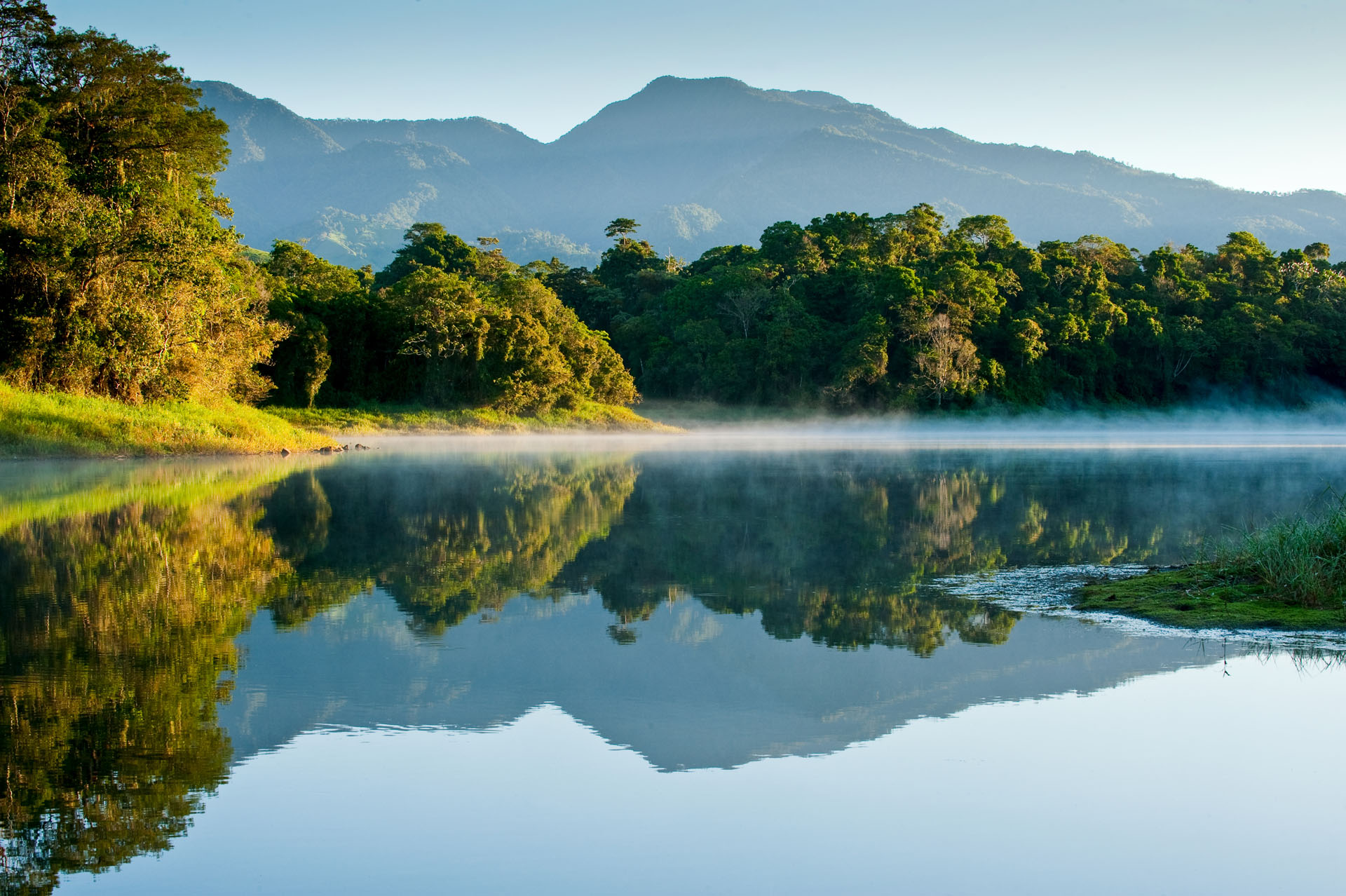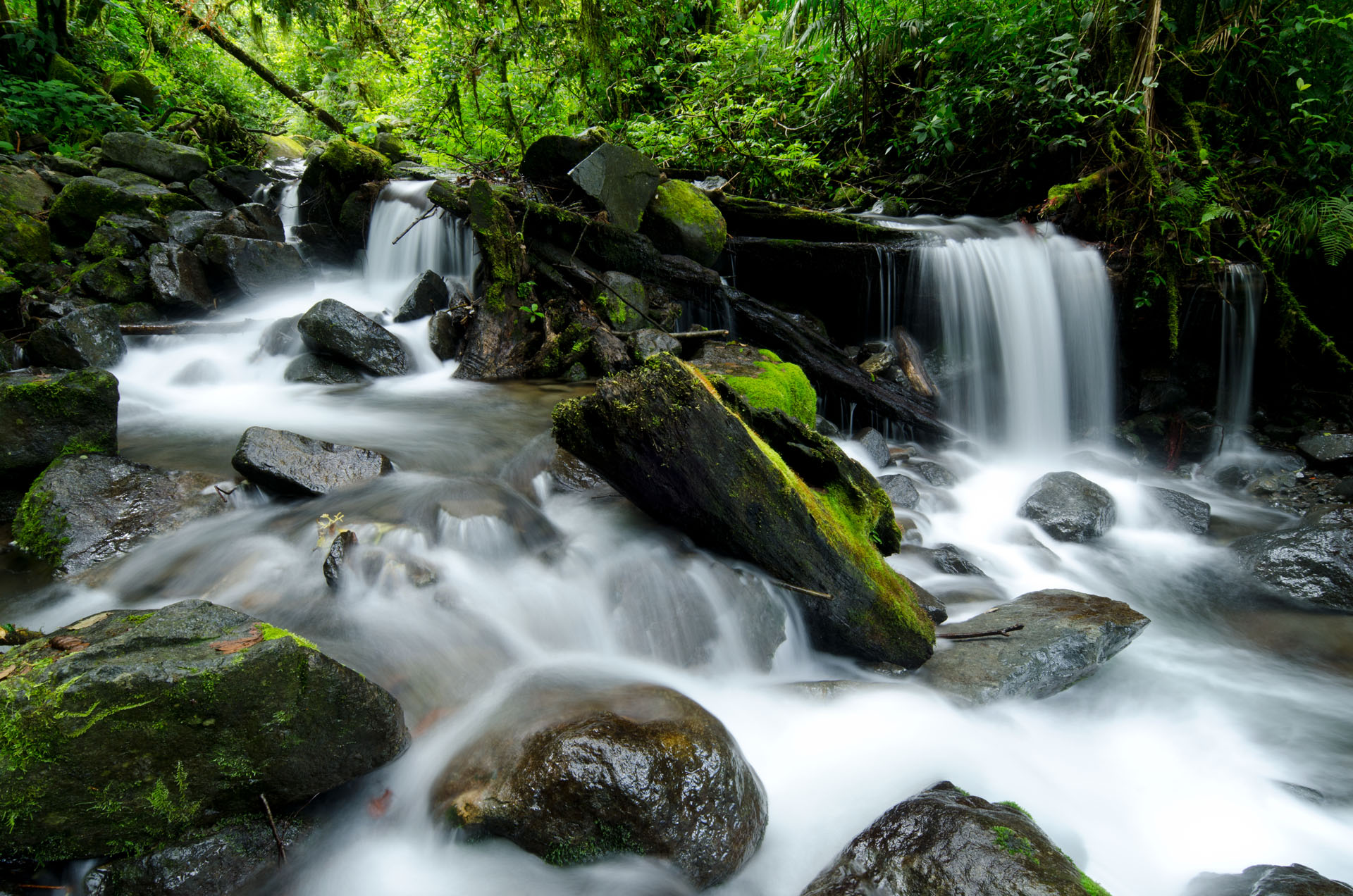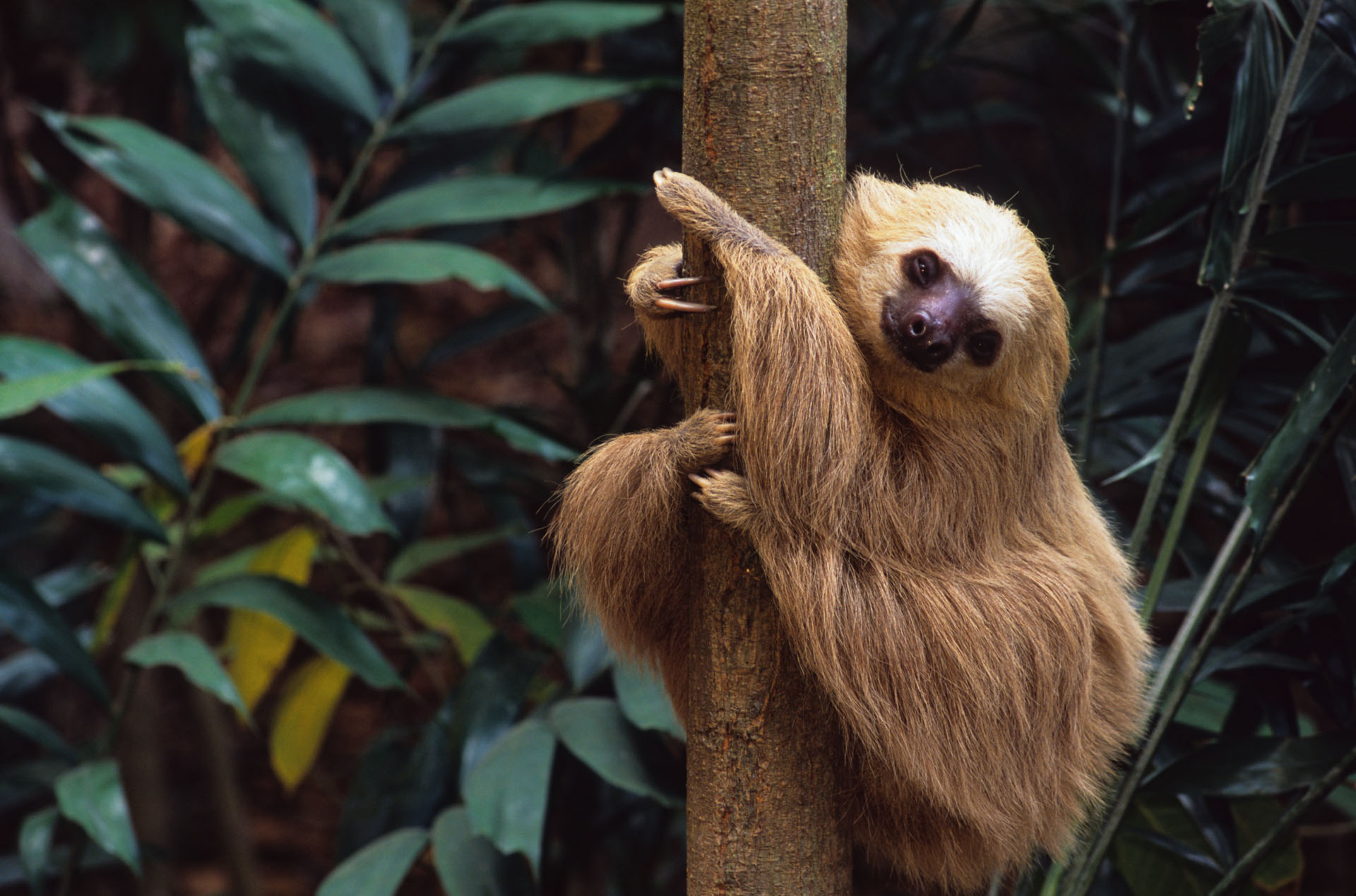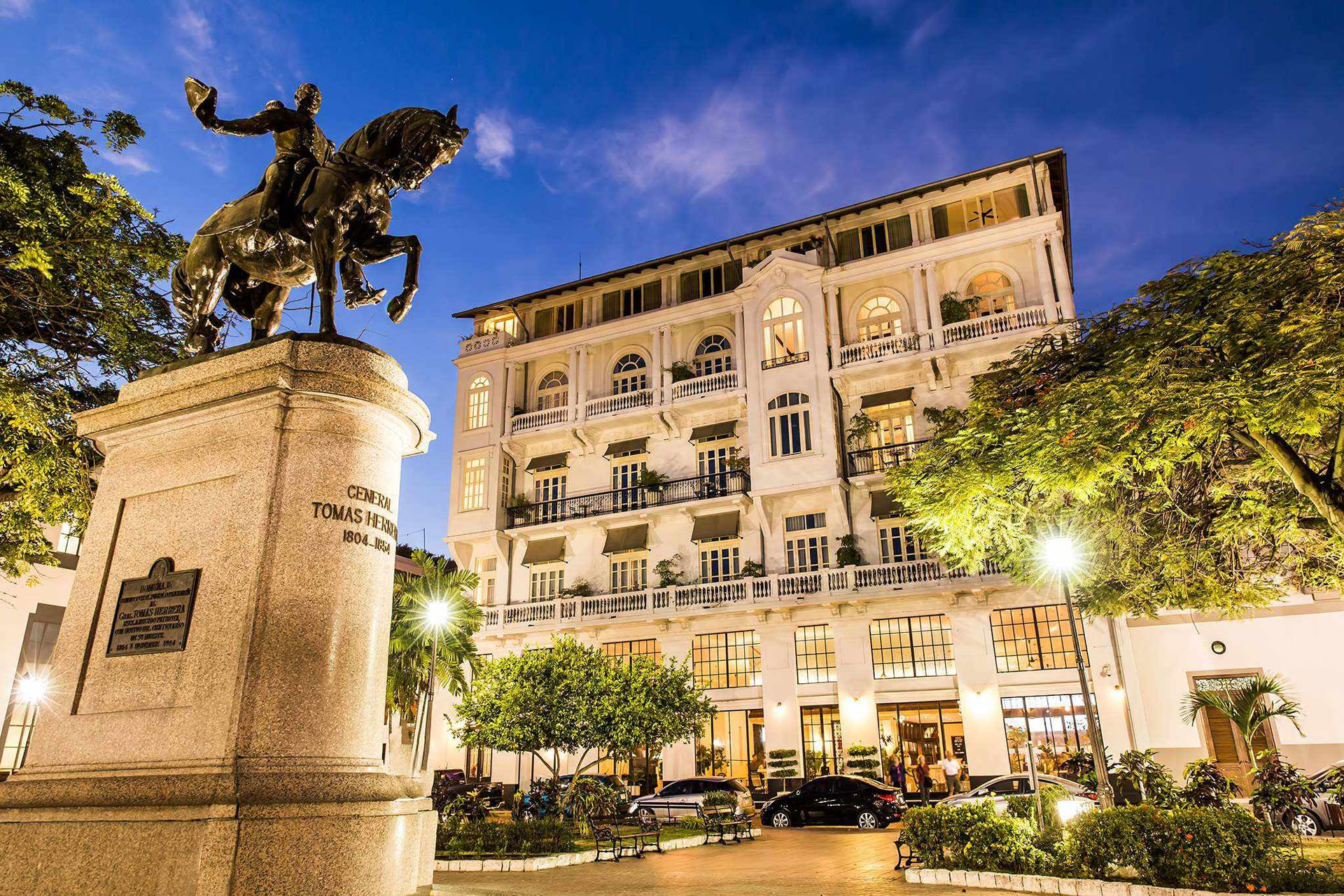WITH ITS WELCOMING TROPICAL CLIMATE, RICH BIODIVERSITY, AND WORLD CLASS COFFEE CULTURE, THIS CENTRAL AMERICAN PARADISE DESERVES A TOP SPOT ON EVERY INTREPID TRAVELER’S BUCKET LIST
BY AMBER GIBSON
When the volcanic isthmus of Panama emerged from the ocean three million years ago, it changed the world forever. By bridging North and South America, Panama facilitated the Great American Interchange of reptiles, mammals, amphibians, and arthropods crossing between the continents. Today, Panama’s tropical rainforests, rugged mountains, and mangrove wetlands are home to some of the most diverse species of flora and fauna in the world.

Similarly, Panama has long been a human melting pot of cultures from across the globe, beginning with indigenous groups many of which are still thriving in the country today to Spanish colonists, African slaves, then Chinese laborers working on America’s first transcontinental railroad in the mid 1800s. By the time the U.S. oversaw the completion of the Panama Canal in 1914, Panama was a truly global country and today most of the citizens consider themselves mestizo, or mixed race.
Bordered by Costa Rica to the west and Colombia to the southeast, Panama is equally rich in nature and culture. Ambitious visitors can easily go snorkeling or surfing in the Caribbean in the morning, then drive south to the Pacific in time for sunset dinner on the beach.

KNOW BEFORE YOU GO
Tocumen International Airport in Panama City is Central America’s largest airport, and Copa Airlines offers the most direct routes to the United States, including from New York, Los Angeles, Miami, Orlando, and Washington, D.C. Panamanian locals have a reputation for being friendly, laid back, and welcoming, especially in rural areas. The official currency is the Panamanian balboa, which equals one U.S. dollar, and U.S. dollars and credit cards are widely accepted throughout the country.
Panama is home to some of the best and most expensive coffee in the world, grown in the volcanic soils of the Chiriquí Highlands. A pound of naturally dried Panamanian Geisha coffee sells for more than $1,000 per pound at auction. The best coffee growers exported nearly all of their beans to Japan and Europe until Panama’s third wave coffee scene began to develop around eight years ago, driven by roasters like Café Unido and Paddle Coffee. Now, there’s excellent coffee everywhere you go, and true connoisseurs can visit coffee farms in Chiriquí for tours and tastings.

Beyond Panama City, Boquete is a charming small town to visit and favorite retirement destination for expats. Bocas del Toro is another popular destination for beaches, surfing, and nightlife, with independent boutique hotels rather than large chains.
ATTRACTIONS
VOLCÁN BARÚ
This active stratovolcano is the highest peak in Panama, at 11,397 feet above sea level. Sunrise at the summit is breathtaking, whether you have clear views or enchantingly thick cloud cover. Take a Jeep 4×4 up 90 minutes of bumpy ascent followed by a brief scramble to the top, marked by a large white cross. You can also choose to hike the entire route, which takes between six to seven hours. Many hikers start at midnight to make it to the top in time for sunrise. There’s a second path up to the summit from Volcán town that is only accessible on foot. This path is a shorter, steeper, and more challenging climb. Parque Nacional Volcán Barú

BIOMUSEO
Uncover Panama’s natural history and wondrous biodiversity at the Frank Gehry designed Biomuseo on the Amador Causeway. For a tiny country that’s slightly smaller than South Carolina, Panama has a staggering concentration of exotic plants and animals, including 978 avian species, the largest number in Central America. Scientists continue to discover new species, including two new frog species just a decade ago. Watch massive cargo ships pass through the entrance to the Panama Canal before stepping inside to view life size replicas of Panama’s vibrant wildlife, and immerse yourself in the Panamarama video projection. Sadly many of Panama’s precious species are endangered and critically endangered due to threats like habitat destruction, invasive species, pollution, and climate change. Amador Causeway 136, Panama City, biomuseo.org

WHERE TO STAY
AMERICAN TRADE HOTEL
The most luxurious boutique hotel in Panama City, American Trade Hotel sits in the center of a UNESCO World Heritage neighborhood, within walking distance of great rooftop bars, locally owned boutiques, and coffee shops. Formerly the American Trade Developing Building when it was constructed in 1917, the colonial architecture and whitewashed facade have been fully restored with 50 clean, contemporary guestrooms. Spend the day exploring Casco Viejo by foot and admire the city’s modern skyline from afar. Enjoy a nightcap at Danilo’s Jazz Club next door, an intimate 50 seat venue by Grammy winning Panamanian jazz pianist and composer Danilo Perez that hosts both international and local talent. Plaza Herrera Casco Viejo, Panama, americantradehotel.com

FINCA EL OASIS
It’s not easy to get to this new ten room property, but the bumpy trek in a 4×4 bus up 7,874 feet above sea level is worth it to stay at the only hotel in the world located within a national park and active volcano. Waking up immersed in the verdant jungle is priceless you might see a toucan, hummingbird, or howler monkey from your balcony while sipping a morning coffee. Outdoor adventures range from leisurely nature walks and bird watching to zip lining through the canopy or taking a rugged off roading tour. Rooms are quite comfortably appointed, especially considering the remote location, with plush bathrobes and excellent service. Volcán Barú, Boquete, finca oasis.com

VALLE ESCONDIDO RESORT GOLF & SPA
This sprawling resort resembles a manicured Disney set of a Tuscan village with quaint fountain courtyards and bridges over small creeks. There’s a chapel, outdoor amphitheater, and lovely spa with a heated indoor pool surrounded by bungalows and suites. Although there are only 38 rooms, all with private terraces and hammocks, the resort community is larger, comprising dozens of condominiums, apartments, and homes, largely owned by expats who have retired in Panama. This is the only true resort community in Boquete, with golf, tennis, and racquetball. Camino Valle Escondido, Bajo Boquete, valleescondidoboquete.com
DAY TRIPS AND TOURS
CHIRIQUÍ PROVINCE COFFEE CIRCUIT
Panama’s Chiriquí Highlands are like the Napa Valley or Bordeaux of coffee, home to more than 50 family owned specialty coffee farms specializing in Geisha coffee, the most exclusive and expensive coffee in the world. Nearly 20 of these farms have recently opened to the public, creating a new sustainable agritourism trail celebrating Geisha’s sweet floral notes, resulting from handpicked super ripe cherries and a precise natural drying process. Enjoy a cortado made with whole milk fresh from their own cows at Janson Coffee Farm or taste coffee and Panamanian chocolate pairings with the Perfect Pair. To reach the coffee farms, you’ll take a 45 minute domestic flight from Panama City to David, then drive for about 45 more minutes. Chiriquí Province, discover.visitpanama.com/coffee

EMBERA QUERA
There are seven living indigenous groups in Panama, and several authentic indigenous communities throughout the country welcome travelers to visit and learn about their cultures. Embera Quera is the most accessible from Panama City. You’ll glide along the river for 25 minutes by traditional canoe to reach a collection of palm thatched huts where 20 Embera families live. Learn traditional dances that celebrate local wildlife, get a temporary jagua tattoo with black hawa nut ink, and shop for colorful handicrafts like handwoven baskets and beaded jewelry made by the local villagers. Young boys catch fresh tilapia from the river that are fried up along with plantains and fresh cut fruit for lunch. Half day excursions can be booked with Aventuras 2000. Lago Gatún, Corregimiento de Limón, Distrito y Provincia de Colón, instagram.com/ emberaquera
DINE AND DRINK
MAITO
Panama’s only restaurant with recognition by Latin America’s 50 Best Restaurants is a stunner. Chef Mario Castrellón serves a playful tasting menu interweaving Panama’s Chinese, Afro Caribbean, Spanish, and indigenous foodways that beautifully illustrates the country’s long history as a cultural melting pot. Guachito de mariscos, a creamy black rice seafood risotto with clams, is a highlight, along with trompe l’œil steak tartare presented to resemble bone marrow on a cassava fritter. A strawberries and cream finale features fragrant local strawberries four ways adorning a pillowy dome of olive oil ice cream enrobed in soft cream cheese. Calle 50, Coco del Mar, San Francisco, Panama City, maitopanama.com

FONDA LO QUE HAY
During the pandemic, chef José Olmedo Carles Rojas shuttered his fine dining restaurant and turned his casual pop up concept of contemporary Panamanian food into a permanent installation near Plaza Herrera in Casco Viejo, serving delectable plates and refreshing cocktails infused with local fruits and herbs. Everything is meant to be shared, from cassava tostada draped with tuna carpaccio and onion ceviche to bite sized smoked corn tortillas stuffed with mozzarella and aged cheddar accompanied by a smoky tomato dipping sauce. Photos of all menu items are available on Instagram with detailed descriptions, and that’s the best way to discover daily specials. Edificio el Colegio, Calle Jose de Obaldia, Panama City, instagram. com/fondaloquehay

